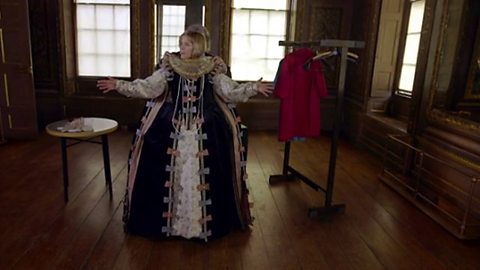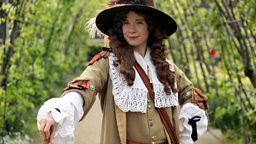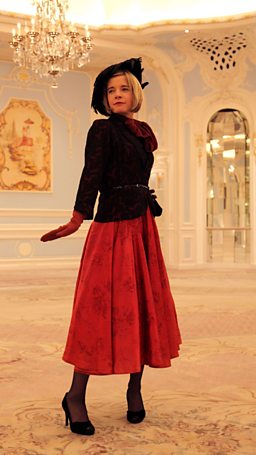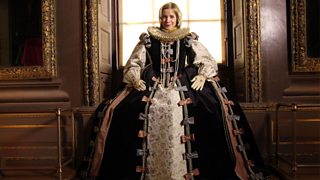Making a royal impression
Dr Lucy Worsley explains how power dressing has been taken to a whole new level by English rulers throughout the ages.
‘What’, Diana would ask herself, ‘will I communicate if I wear this?’Lucy Worsley
I’m the Chief Curator at , the independent charity that looks after the five unoccupied royal palaces of London, and opens them up to four million visitors a year. We’re also the guardians of a 10,000 piece collection of dress worn by kings, queens and their courtiers: the Royal Ceremonial Dress Collection. Part of my job includes acquiring new items for this collection, showing it to visitors, and researching it. Getting familiar with marvellous, intimate items like William III’s vest, or Queen Victoria’s underwear, sparked my interest in how royal clothing has changed through the centuries.
I’ve discovered that some things have remained the same: dressing to impress; wearing bright colours to stand out in a crowd. But other things have changed enormously. Elizabeth I looked like a creature from another world: she was strange, wonderful, completely different to her subjects in appearance. In these more democratic times though, her successor Elizabeth II looks much more like one of us.
Where can I see the historic clothes included in this programme?
You can see royal fashion for yourself in some of the museums we visited in this programme. Go to to see Elizabeth I’s extraordinary set of stays (a garment like a corset) from 1603. See King James II’s wedding suit in the British Galleries of the . Beautiful 1950s evening dresses by Norman Hartnell and Hardy Amies for the Queen and for Princess Margaret are on display at . ‘Oliver Cromwell’s hat’ (or is it really his hat? Watch the programme to find out!) can be seen at The Cromwell Museum, Peterborough.
So what should a monarch wear?
The answer to this question changes over time. Earlier on in history, it was important to impress your subjects with your wealth and your bling. That’s why Elizabeth I wore dresses weighed down with jewels, and why James II got married in a suit covered in gold lace!
In more recent times, a flair for fashion is good, but you mustn’t spend too much money. The super-stylish George IV, who wore golden bedroom slippers, got into trouble for spending more time with his tailor than his cabinet ministers. Edward VIII, who abdicated as king in 1936, was generally thought to be a bit too stylish and too interested clothes. To him we owe modern trends such as sportswear worn on non-sporting occasions, and informal fashions such as Fairisle sweaters. While Princess Margaret, the Queen’s younger sister, could wow the fashion world in Christian Dior’s sumptuous ‘New Look’ of the 1940s, the Queen herself had to wear more sober British designers.
It’s important to stand out from the crowd. That’s why the Queen in the 1950s used to wear white and pale colours – they looked good on black and white film. Today, with colour film, she wears bright block hues. Her hat never shades her face, her umbrella, if she has one, is clear see-through plastic, her shoes are comfortable and not too high, and lead weights sewn into a hem stop skirts blowing up in the wind.
Finally, while you can’t look too stylish, clothes are fundamentally important to a king or queen. That’s why Queen Victoria took the trouble to tell her family what to wear, and composed them into colour-coordinated groups for portraits. She knew that most of her subjects would never meet her face to face, but they would form a strong impression simply from what they saw in newspaper illustrations. As Diana, Princess of Wales, said to one of her designers, that’s what she thought about when getting dressed in the morning. ‘What’, she would ask herself, ‘will I communicate if I wear this?’

"Does my bum look big in this?"
Dr Lucy Worsley tries on an Elizabeth I Armada style dress.


Find out more
-
![]()
Dr Lucy Worsley reveals her experiences of dressing up as some of our most iconic rulers.

